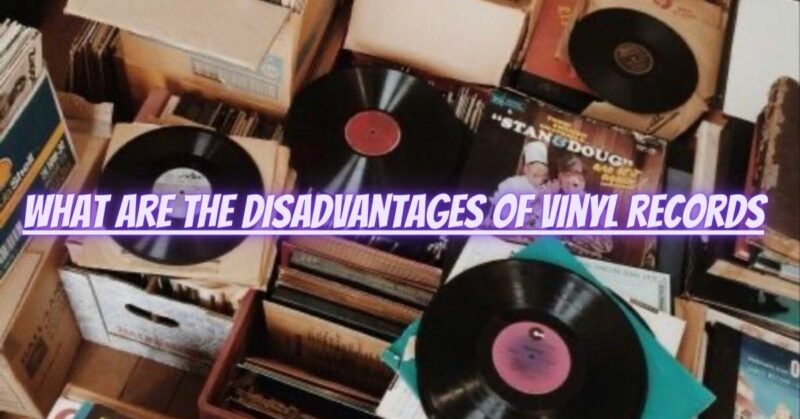Vinyl records have experienced a resurgence in popularity over the years due to their unique sound characteristics and nostalgic appeal. However, it’s important to recognize that vinyl records also come with certain disadvantages compared to other audio formats. In this article, we will explore the limitations and disadvantages of vinyl records to provide a balanced perspective for collectors and music enthusiasts.
- Fragility and Susceptibility to Damage: Vinyl records are relatively delicate and susceptible to damage. They can easily scratch, warp, or become damaged if mishandled or improperly stored. Even minor scratches can result in audible pops or skips during playback, diminishing the listening experience. Additionally, exposure to heat, humidity, or direct sunlight can cause warping or deterioration of the vinyl, leading to irreversible damage.
- Limited Duration per Side: Vinyl records have a finite playing time per side due to their physical size and groove limitations. A standard 12-inch LP (Long-Playing) record typically holds around 22 minutes of music per side, resulting in a total playing time of approximately 45-50 minutes for a single-disc release. This limitation necessitates frequent record flipping or multiple discs for longer albums, which can interrupt the listening experience.
- Surface Noise and Imperfections: Vinyl records inherently have surface noise and imperfections due to the nature of the format. These imperfections, such as clicks, pops, and hisses, can be present even on brand-new records. While some argue that these characteristics contribute to the charm and authenticity of vinyl, others may find them distracting or undesirable, especially when compared to the pristine quality of digital formats.
- Portability and Convenience: Vinyl records are not as portable or convenient as digital formats. They require a turntable for playback, which is not easily transportable like a portable music player or smartphone. Vinyl records are also bulkier and heavier, making them less practical for on-the-go listening. Additionally, the process of changing records and manually flipping sides can be cumbersome compared to the seamless playback of digital formats.
- Limited Availability and Higher Cost: Vinyl records often have limited availability compared to digital formats. While the vinyl market has grown, not all albums or songs are released on vinyl, especially for newer or less mainstream artists. Additionally, vinyl records can be more expensive than digital or CD formats due to the manufacturing costs involved. Limited availability and higher price points may limit access to certain music for some collectors.
Conclusion: While vinyl records offer unique sound characteristics and a tangible, nostalgic experience, it’s important to consider their limitations and disadvantages. Vinyl records are fragile, prone to damage, have limited playing time per side, and may have inherent surface noise and imperfections. They are less portable and convenient compared to digital formats and often come at a higher cost. However, for many collectors and music enthusiasts, these disadvantages are outweighed by the emotional connection, warm sound, and unique experience that vinyl records provide. Ultimately, the choice to embrace vinyl as a format depends on personal preferences and priorities.


